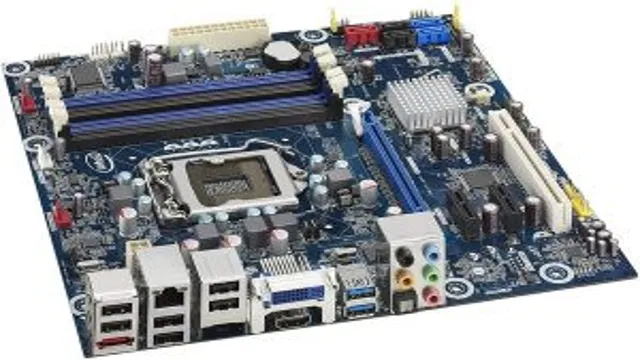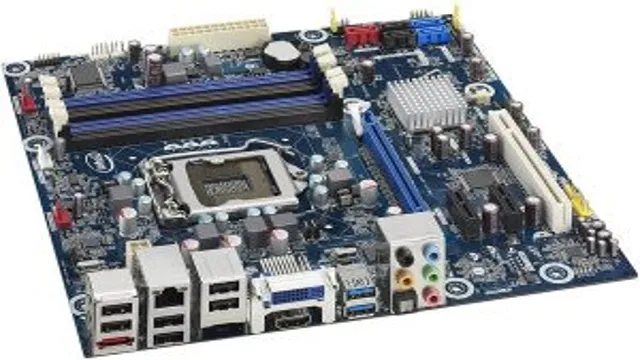Installing motherboard drivers can be a daunting task, especially for those who are not familiar with computer hardware. However, with the right guidance, it can be a smooth process that ensures your computer’s optimal performance. In this post, we’ll go over easy steps to install motherboard drivers, even if you have little to no experience with computer hardware.
So, grab your screwdrivers and let’s get started!
Check Your Motherboard Model
Are you struggling with how to install motherboard drivers? The key step in this process is to check what model your motherboard is, as drivers are specific to certain models. To find out your motherboard model, you can use a few different methods. One common way is to open your computer case and examine the physical board for a model number or name.
If this isn’t possible or convenient, you can also use software tools to identify your motherboard. For example, CPU-Z is a popular program that provides details about your system hardware, including the motherboard model. Once you have determined which motherboard you have, visit the manufacturer’s website to find downloadable driver files.
These will typically be categorized based on the component, such as audio, LAN, or chipset drivers. It’s important to download the correct drivers for your motherboard’s model and operating system version in order to avoid any compatibility issues or performance problems. Overall, installing motherboard drivers is a necessary step for ensuring optimal performance and functionality for your computer.
By accurately identifying your motherboard model and finding the appropriate driver files, you can ensure that your system runs smoothly and efficiently.
Go to Device Manager on Your Computer
If you’re trying to figure out your motherboard model, one effective method is to check your computer’s device manager. Doing so will allow you to access a list of the hardware components that make up your system, including your motherboard. Here’s how you can access the device manager: first, right-click on the Start menu and select “Device Manager” from the options.
Once you have the device manager open, look for the “System Devices” category. This category will contain a list of all the devices and components that make up your computer’s hardware, including your motherboard. Simply expand the category and look for the listing with “Motherboard” or a similar name.
Once you find it, you should be able to locate your motherboard model and manufacturer information. Keep in mind that depending on your system, the exact steps and wording may vary slightly. By utilizing this method, you’ll have a better understanding of your computer’s hardware makeup and be equipped to make any necessary upgrades or repairs.

Download Drivers from the Manufacturer’s Website
If you want to download drivers for your motherboard, the first step is to check your motherboard model. This information can usually be found by looking at the physical board itself or by checking your system’s documentation. Once you have your motherboard model, head to the manufacturer’s website to find the appropriate drivers.
Most manufacturers will have a support or downloads section where you can find the latest drivers for your specific model. It’s important to download the correct drivers to ensure that everything works smoothly and to prevent any compatibility issues. While it may be tempting to download drivers from other sources, such as driver update software or third-party websites, it’s always best to stick with the manufacturer’s website to ensure that you’re getting legitimate, up-to-date drivers.
By following these steps, you can ensure that your motherboard is running at its best and that your system is running as smoothly as possible.
Install the Drivers
Installing motherboard drivers is an important part of setting up your computer. These drivers allow your operating system to communicate with various components on your motherboard, such as the audio and network controllers. The first step in installing drivers is to insert the CD that came with your motherboard into your computer or downloading the latest drivers from the manufacturer’s website.
Once you have the drivers, simply follow the instructions provided by the installer. Some drivers may require a reboot of your computer for the changes to take effect. It’s important to ensure that you install all necessary drivers to avoid any issues with your computer’s performance.
So, whether you’re setting up a brand new system or upgrading your current one, don’t forget to install your motherboard drivers to ensure optimal performance and functionality.
Run the Installation File
Before utilizing a new hardware device on your system, it is crucial to install the necessary drivers. The drivers act as a translator between your operating system and the device, enabling them to communicate effectively. Once you have downloaded the driver, you will need to run the installation file.
Running the file will initiate the installation process and guide you through the setup steps. Usually, the installation process is straightforward and only requires a few clicks to complete. However, it is vital to read and understand each step to avoid any mistakes or complications.
After the installation process is completed, you may need to restart your system to finalize the changes made by the drivers. Installing the drivers will ensure optimal performance of your device and prevent any malfunctioning issues. Therefore, it is critical to run the installation file to guarantee proper device functionality.
Follow the On-Screen Prompts
When you’re installing a new device on your computer, it’s common to be prompted to install drivers. Drivers are essential pieces of software that allow your computer to communicate with the hardware you’re installing. Depending on your operating system, you may need to allow your computer to search online for the correct drivers or install them from a CD or USB drive.
It’s essential to follow the on-screen prompts carefully to ensure you’re installing the correct drivers for your hardware. Installing the wrong drivers can cause issues, so it’s crucial to pay attention and choose the right ones. Once your drivers are installed, you can start using your new hardware.
So, always follow the on-screen prompts and choose the correct drivers to ensure that everything runs smoothly.
Restart Your Computer
Restart Your Computer to Install Drivers So, you finally got those latest drivers you’ve been eyeing for weeks! Now it’s time to install them on your computer. However, before getting started, it’s important that you restart your computer. Restarting your computer ensures that any background tasks that may be running are stopped, providing a clean slate for the new drivers.
In addition, restarting your computer also refreshes its memory, allowing it to recognize hardware changes. After restarting your computer, you’re ready to install your drivers. Begin by running the driver installer program.
It will guide you through the installation process, which usually involves clicking “Next” a few times and selecting a few options. Be sure to carefully read the installer’s instructions as you go along to avoid any mistakes. Once the installation process is complete, you will be prompted to restart your computer again.
This step is crucial as it ensures that the driver changes are properly applied and your computer recognizes the newly installed drivers. After the final restart, your computer should be ready to go with the latest and greatest drivers! In conclusion, restarting your computer before installing drivers is essential as it provides a fresh start and refreshes your computer’s memory. By following the installation process carefully and restarting your computer as prompted, you can be sure that your new drivers are installed and functioning properly.
Update Your Drivers Regularly
Installing motherboard drivers is an important step in maintaining the optimal performance of your computer. You may be wondering, “how do I install motherboard drivers?” First, you need to identify the brand and model of your motherboard. Once you have this information, you can visit the manufacturer’s website and download the latest drivers.
It is important to regularly update your drivers, as outdated drivers can cause performance issues and even software crashes. You can also use driver update software to ensure that you have the latest drivers for all components of your computer. Neglecting to keep your drivers up to date can lead to frustrating issues that could have easily been avoided with a simple update.
So, make sure to check for and install updates regularly to keep your computer running smoothly.
Check for Updates on the Manufacturer’s Website
As a computer user, it’s essential to update your drivers regularly. Drivers are software programs that ensure your computer hardware and software can communicate with one another efficiently. Outdated drivers can lead to system malfunctions, crashes, and even security breaches.
One way to stay on top of updates is by checking the manufacturer’s website regularly. Manufacturers often release new drivers that address known issues, fix bugs, and improve performance. By downloading and installing the latest drivers, you can ensure your computer runs optimally and stays secure from cyber-attacks.
Additionally, keeping your drivers up-to-date can save you time and money by avoiding costly repairs or replacements for hardware components. So, take a few minutes to check for driver updates regularly, and keep your computer running smoothly.
Use Driver Update Software
Updating your drivers regularly is essential for maintaining the smooth functioning of your computer. It can be a tiresome and time-consuming process to manually update drivers. Here’s where driver update software comes into the picture.
With driver update software, you can easily keep all your drivers up-to-date without any hassle. It scans your system automatically, detects outdated drivers and installs the latest versions with just a few clicks. This way, you can ensure that your computer is running at its optimal level.
The best part is that driver update software is designed to work in the background, so you don’t have to worry about constantly checking for updates. With regular updates, you can also ensure that your computer is secure and protected from any potential security threats. So, go ahead and invest in reliable driver update software to keep your computer running smoothly with the latest drivers.
Conclusion: Enjoy Your Updated Motherboard Drivers
In conclusion, installing motherboard drivers may seem like a daunting task, but fear not! With a little bit of patience and a lot of caffeine, you can do it. Think of it like putting together a puzzle – every piece (or driver) fits together perfectly to create a fully functioning motherboard. Just remember to download the correct drivers for your specific motherboard and follow the installation process carefully.
And if you’re feeling really overwhelmed, just channel your inner Bob Ross and remind yourself that it’s just a happy little installation. Happy building!”
FAQs
What is the purpose of motherboard drivers?
Motherboard drivers are used to enable communication between the hardware devices and the operating system. They ensure that the hardware components of the motherboard function properly.
How can I find the appropriate drivers for my motherboard?
You can find the appropriate drivers for your motherboard on the manufacturer’s website. Look for a support section or download center, and enter your motherboard’s model number to find the correct drivers.
Can I install motherboard drivers without an internet connection?
Yes, you can install motherboard drivers from a CD or USB drive that came with your motherboard. If you don’t have a disc, you can download the drivers on another computer with internet access and transfer them to your computer using a USB drive.
What should I do if I encounter issues while installing motherboard drivers?
If you encounter issues while installing motherboard drivers, try uninstalling any existing drivers and then reinstalling the latest version. If this doesn’t work, consider seeking support from the manufacturer’s customer service or warranty department.
